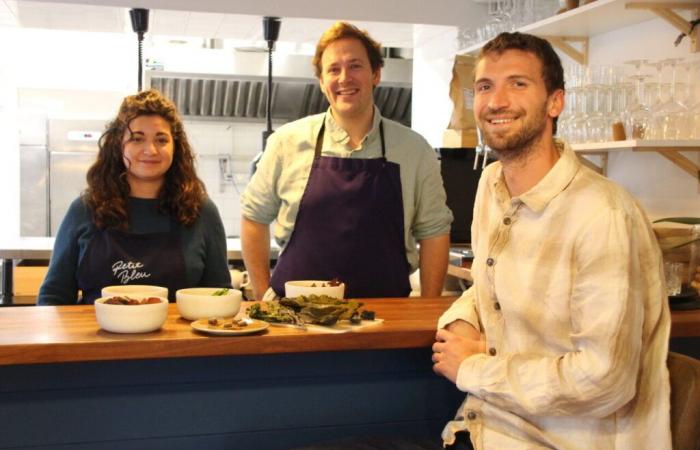
Par
Pierre-Yves Gaudart
Published on
Nov. 6, 2024 at 11:40 a.m.
See my news
Follow Le Pays Malouin
On a table in a Dinard restaurant Little BlueEwen Frin has arranged some varieties of Breton algae. Dulse, sea spaghetti, wakame, aonori, etc. are among those it markets for “restaurateurs and food artisans”.
Enzo Pollini, recently settled in Dinard, quickly adopted these aquatic plants for some of his dishes. That day, he inaugurated his duck heart with fresh sea lettuce after having already put a croque-marin with dulse and herring on his menu. Or its imitation pasta made from sea spaghetti, parmesan, miso cream, etc. :
“People would be mistaken. It really looks like pasta », laughs the restaurateur, client of Omanori, the company created by Ewen Frin.
From Paris to Saint-Malo
Just a year ago, this 28-year-old young man gave “advice for tech companies and start-ups in Paris”. But the ex-Rennais, used to weekends in Saint-Malo, ended up responding to the call of the open sea. And seaweed, the one he sometimes brought back during his scuba dives to cook with.
700 species in Brittany
“There exists 700 species of algae on the Breton coast including around thirty authorized for consumption. They have a real nutritional benefit – they are a super food, rich in iron, iodine, vitamins, proteins, fiber – but also taste. However, despite their abundance, they are not valued enough. The Japanese, great lovers of algae, even envy us our terroir or rather merroir. The Breton coast is the largest field of algae in all of Europe. »
Fresh unsalted seaweed
Based in Saint-Malo, “a beautiful business card”, Ewen Frin prospected a number of algae producers and especially Breton and Western restaurants. Of course, the 80 chefs contacted did not discover the product with him.
But they were interested in the possibility of being delivered with fresh seaweed, and, I insist, unsalted. The interest of fresh lies in the authenticity of the taste, the brilliant color as well as the firm and crunchy texture. But I also sell dehydrated seaweed by drying in the wind and in the sun. They can thus be kept for up to 18 months.
Vegetate the plates
The young man has no shortage of arguments:
“Restaurants feel the need to plant-based their dishes for environmental reasons and the increase in the number of flexitarians. Algae requires no fertilizer, no pesticides, no fresh water. This is an argument for cooking locally and highlighting your region. It also creates surprises for the customer, new flavors and presentations of the dishes. At the beginning, I would like to give some advice to restaurateurs, but seaweed inspires their creativity. »
The algae marketed and delivered by Ewen Frin come from a “partner” producer of Cancale. “There are pools there dedicated to my activity. Once fished, they are kept alive there. As orders are placed, they are packaged, before shipment, in airtight bags, recycled and recyclable, on my production site in Saint-Malo. »
For the moment, Ewen Frin has convinced around forty clients, notably in Saint-Malo, Rennes, Saint-Brieuc and Vannes. Also planned is the sale of marine plants such as wild rocket, wild fennel and even obione that he will harvest himself.
Follow all the news from your favorite cities and media by subscribing to Mon Actu.





